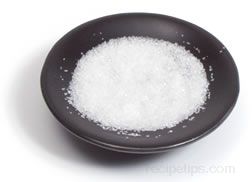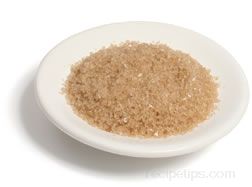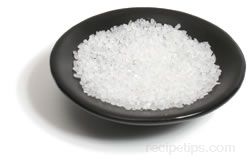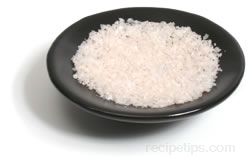Often referred to as solar salt due to the sun evaporating the water to create the salt, sea salt is available as a fine or extra fine-grained crystal, as a larger coarse crystal, or as thin flakes of salt crystals. The size and thickness of the crystal will affect how quickly it dissolves when added to foods, with the sea salt flakes dissolving very quickly and the larger coarse crystals requiring a longer amount of time to dissolve. However, most sea salts are considered to be quick dissolving and are often not considered to be long lasting in cooked dishes.
Sea salt contains very little iodine, so some varieties have iodine added to be sold as iodinized sea salt, thus improving the nutritional value of the product. Since sea salts are believed to have a softer and fresher flavor, they are best used as finishing salts to enhance the flavors of foods after they have been cooked or prepared. Common finishing salts include the Australian, French (fleur de sel), Italian, Portuguese, and Hawaiian Black lava sea salts. However, sea salts are also good to use as roasting salts, being applied prior to cooking, which include varieties such as the French (sel gris), English, Korean, Maine, and Hawaiian Red sea salts. Brushing a coat of salt on steamed fish or roasted meats prior to cooking is common in many kitchens to preserve moisture and flavor, after which a finishing salt is offered when the food is served. The coating provides a delicate crust to foods that add to the presentation as well as the flavor. Sea salts are known for giving a variety of foods a crispy or crunchy texture in addition to a complex flavor and an earthy aroma.













